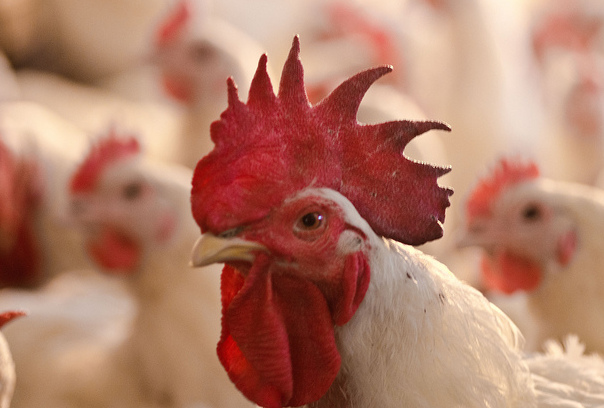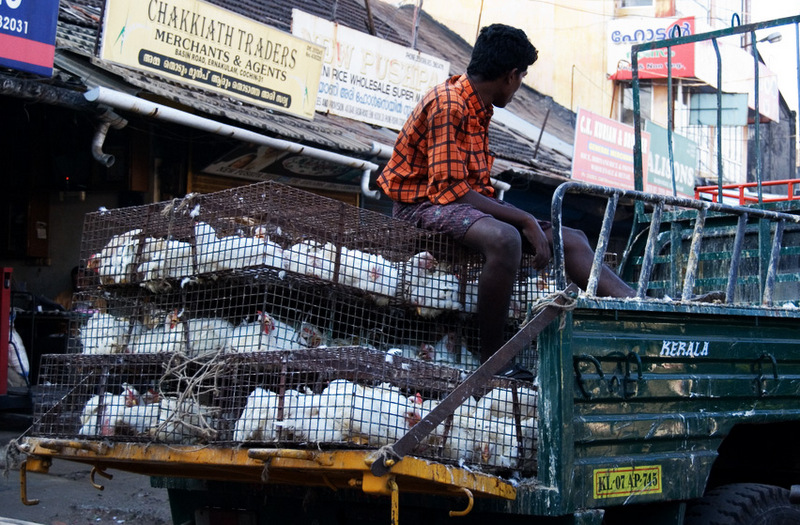12/07/2016
Ayala porichathundu
Karimeen varuthathundu
Kudampuli ittu vacha nalla chemmeen curryundu
Thumbapoo niramulla cherumani chorunde
Uppilitta mangayundu, unnaan vaa machunane...
In the 1979 movie Venalil Oru Mazha, a Mundu-Veshti-clad Srividya invites her beau to the dinner table with these lines listing an enticing menu — fragrant rice with a side of fried mackerel and Pearl Spot, prawn curry flavored with pot tamarind, and pickled mango. A table laden with marine and freshwater fish prepared multifariously — deep fried, shallow fried, steamed in a plantain leaf, stewed in a spicy curry, or in a base of mango, tamarind, or even coconut milk — was all the Malayalee wished for in a meal.
God’s Own Country was always a fish country. A dish of chicken meant going out to catch the country fowl roaming in your backyard, or the neighbor’s. This was the story a long time ago, before broiler chicken landed on our plates. Fried sardines and mackerels are now out.
The culinary scenario in Kerala, which has a coastline of 590 kilometers, has changed with the arrival of broiler chicken, the fowl cutting across region, caste, and creed that is quickly ousting fish as our staple protein. Kerala on an average consumes as much as 800,000 kilograms of chicken a day, worth at least about 80 million rupees, according to Siyad Mirasahib, joint secretary, All Kerala Poultry Farmers & Traders Association.
Higher living standards and Malayalee’s changed attitude toward eating out means a restaurant is open at every nook and corner. And a quick look at their menus reveals the true hero — chilli chicken, chettinadu chicken, chicken 65, chicken Manchurian, and so the list goes. Chicken biryani is now the signature dish of Kerala. Fast food chains such as McDonalds and KFC, hugely popular among young people, only tilt the balance in the favor of chicken. While beef was once a favorite, health concerns have pushed the red meat to the back shelf. Unlike beef or pork, the secular chicken is also free from the bounds of religious and caste restrictions.
Aghosh Raghavan, a software engineer at Infopark Kochi, is a chicken lover. “Without chicken in my daily menu, I feel my food is incomplete,” he says. As someone who loves cooking new cuisines, Raghavan feels it’s easy to experiment with chicken. “Whenever I taste a new chicken dish, I try making it at home too,” he says.
Ease of preparation makes chicken a favorite among both homemakers and restaurateurs. It doesn’t hurt that chicken prepared in Kerala style goes well with most staples like dosa, appam, idiyappam, chappathi, pathiri, or rice. Adding to the variety of chicken preparations is the Gulf Malayalee, who brought with him Arab cuisine to the state. Though mutton is the popular meats in Arab countries, the versatile chicken replaces them in meat-based dishes here. The latest Arab entrant into Kerala restaurants is the ‘Kuzhimanthi,’ a biryani-like dish with the meat roasted in a clay oven dug into the ground.
It costs 90 rupees to 120 rupees a kilogram to feed the whole family with chicken dish. Fish, on the other hand, costs more and need not be as readily available as chicken, which is now sold everywhere.
Dr. Meera Midhun, a dietician at Rajagiri Hospital, Aluva, attributes Malayalee’s chicken craving to the rise of nuclear families. “Our shift toward nuclear families absolutely changed society, and the love for chicken is part of this changed way of living,” she says. With both parents often working, it’s easy to cook and pack chicken for school with some bread. A mother of two, Dr. Midhun feels sorry that she hasn’t been able to introduce her children properly to the different varieties of fish. “Considering the way we cook for our children, it’s only natural that they are more attracted toward chicken. Fish is more of a traditional kind of food. We have no time to introduce this to our children, even though the Omega 3 fatty acid in fish is highly beneficial for their health,” she says.
Jose Varkey, corporate chef at Casino Group of Hotels, who has more than four decades of experience, laments that though despite the benefits of fish, Malayalees are deliberately avoiding fish for the sake of convenience. He says broiler chicken is a breed raised against nature and is slowly killing our immune system. He also points to the alarming depletion of fish from our seas. “Once we thought that we would never have any dearth in the fish population. Sardine used to be plenty in our coastal areas; today its supply is hardly enough to meet the demand.”
A recent study by Central Marine Fisheries Research Institute in Kochi revealed that Kerala’s fish stocks in 2015 reduced 16% from the previous years. Availability of sardine reduced 55% in the same year. Scientists attribute this to the El Nino effect, which causes temperature to rise in the ocean bed, reducing the planktons. Excessive fish capture and dumping waste into the sea also lead to the drop in marine catch.
Meanwhile, the popularity of chicken is triggering some health concerns. Broiler chicken is cited as a major reason for the early onset of puberty in girls and increased cases of fibroid in the uterus, doctors say. Two years ago, the Centre for Science and Environment released a report on the rampant use of antibiotics in the poultry industry. The study showed that fowl are fed antibiotics to promote growth. The demand for chicken fell for a short while after the report was published and the Indian Medical Association demanded stringent control on import of antibiotics and feed supplements.
Mirasahib of the poultry farmers group claimed that only parent chicken and egg chicks are given antibiotics to improve their resistance to diseases. Chickens raised for meat are never fed antibiotics, he says. The imposition of 14.5 per cent Value Added Tax on poultry in Kerala also prompts farmers to buy eggs and hatch them locally in select places, he said.
As for now, however, health concerns seem to have no significant impact on Malayalees’ chicken consumption.
(Photo credit: mynameisharsha via Foter.com / CC BY-SA
USDAgov via Scandinavian / CC BY
karmadude via Scandinavian / CC BY-SA)


